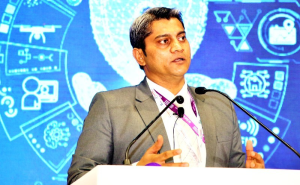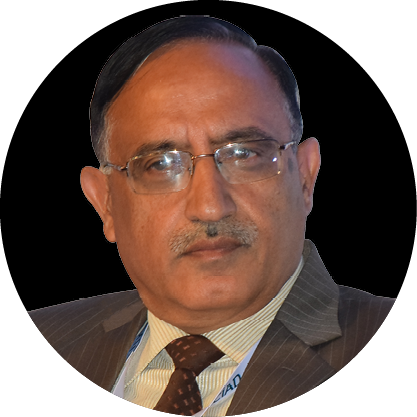

Associate Editor | Business & Industry Trends
In India ambiguity in property ownership due to legacy issues, gaps in the legal framework and poor administration of land records have often threatened individual property rights, leading to long standing legal disputes. The situation is worse in villages.
Survey of rural land in India for Settlement and record of rights had last been completed many decades back and moreover, abadi (inhabited) area of villages were not surveyed/ mapped in many States. Hence, in the absence of a legal document, the owner of the property in the rural areas are not able to leverage their own property as a financial asset acceptable by the banks for the purpose of providing loans and other financial assistance.
With the intent to address this problem, the Government of India has initiated an ambitious project titled ‘Swamitva,’ which stands for Survey of Villages and Mapping with Improvised Technology in Village Areas.
In the words of Ankit Mehta, Co-founder & CEO of ideaForge, an India-based design focused UAV manufacturer, “The genesis of this idea lies in Peruvian economist Hernando de Soto Polar’s work on informal economy and importance of business and property rights. According to him, the GDP of an economy where land rights are well established boosts up by 100 basis points. This encouraged the Ministry of Panchayati Raj and Survey of India to initiate the project.”

The Swamitva Project, which was launched on April 24, 2020 (Panchayati Raj Diwas), aims to provide an integrated property validation solution for rural India. The demarcation of abadi areas (the abadi area includes inhabitant land, inhabited areas contiguous to Abadi and wadis/basties in rural areas ) would be done using Drone Surveying technology and Continuously Operating Reference Station (CORS) technology. SoI shall also perform the establishment of CORS Network, preparation of Geoid Model and ensure operation and maintenance of CORS network stations and provision of CORS network services for 5 years.
With the collaborative efforts of the Ministry of Panchayati Raj, State Panchayati Raj Department, State Revenue Departments and Survey of India (SoI), the project would provide the ‘record of rights’ to village household owners possessing houses in inhabited rural areas in villages which, in turn, would enable them to use their property as a financial asset for taking loans and other financial benefits from banks. This could also pave the way for clear determination of property tax, which would accrue to the Gram Panchayats directly in States where it is devolved.
Apart from demarcation of individual rural property, other Gram Panchayat and community assets like village roads, ponds, canals, open spaces, school, Anganwadi, Health sub-centres, etc. would also be surveyed and GIS maps would be created. Further, these GIS maps and spatial database would also help in preparation of accurate work estimates for various works undertaken by Gram Panchayats and other Departments of State Government. These can also be used to prepare better-quality Gram Panchayat Development Plan (GPDP).
Survey of India (SoI) will map rural inhabited lands using drones and latest survey methods.
Surveys will be carried out across the country in a phase wise manner over a period of four years (2020-2024).
6.62 lakh villages will be covered under the project
The pilot phase will cover 1 lakh villages in Haryana, Karnataka, Maharashtra, Madhya Pradesh, Uttar Pradesh and Uttarakhand in six months.
The pilot phase (FY 2020-21) has a projected outlay of INR 79.65 crore ($11.97 million).
The outcome from the project will include updation of the ‘record-of-rights’ in revenue/property registers and issuance of property cards to the owners.
The project is an excellent initiative to empower rural India and will largely benefit landowners by making the land records more systematic and accurate.
Since accuracy is of paramount importance in case of land measurement, drone surveying has become the preferred choice for Swamitva. As Girish Kumar, Surveyor General of India, explains, “Since every piece of land is dear to the occupant, it is necessary to have a clear demarcation of boundaries. Missing out even few centimeters can become a huge cause of concern for the occupant, as it can diminish the land worth and consequently the individual’s financial status. When we are looking at high level of accuracy, drone mapping is highly suitable.”
Under the project, large scale mapping of the rural inhabited area would be carried out using Professional Survey Grade UAVs as these UAVs are RTK (Real Time Kinematic) / PPK (Post Point Kinematic) enabled and use high resolution RGB sensor on 1:500 scale with image capturing of better than 5 cm GSD ± 12.5 cm or better planimetry accuracy to provide accurate projection centre and orientation of the images captured during the flying.
The scope of the Swamitva Project extends much beyond drone mapping. As mentioned in the project document, the main activities of Survey of India will include:
>> Acquisition of images
>> Feature extraction and base map generation
>> Ground validation of Ortho-rectified images and digital maps by SoI for accuracy
>> Ground-truthing and validation of land parcel maps collaboratively by SoI and state Revenue Department
>> Post validation and verification, creation of final LPM (land parcel maps), village maps/digital GIS maps and GIS database
>> Handing over of the final deliverables (final maps and GIS database) to state Revenue Department and to the state Rural Development/Panchayat Raj Department duly vetted by MoD. The deliverables should include a working GIS database and application so that further updation of data and utilization of data is possible without incurring any licence charges later on
>> Handing over of village maps and digital GIS database to MoPR (through NIC-GIS division)
>> Issuance of property cards by state authorities/Revenue Department
>> Training, capacity building for hand holding revenue officials
It is evident from the scope of activities that the project extends far beyond drone survey. It has huge potential to catapult the Indian geospatial industry. Activities centered around ground truthing, surveying, feature extraction and training will create immense opportunities for startups as well as established companies in the geospatial sector.
The project will set the direction for using surveying technologies in land administration in India. Going beyond the villages, the possibilities will be unending. Additionally, the project will generate a large number of jobs and serve the pent-up demand for drone pilots, service providers and private surveyors.
Girish Kumar encourages the geospatial industry players to be a part of this project by highlighting the various ways they can collaborate. He shares, “We are looking at both established companies as well as startups for making this project a success. The opportunities to collaborate and work together are many. We are targeting 6.62 lakh villages, for which we will require 600-700 drones. We are talking about only 10% of the country. The remaining 90% will also be covered with same high resolution. Thus, the scope of drone mapping is going to increase exponentially in the near future. We also plan to carry out similar surveys in urban areas.”
“Along with drone procurement, we are looking at hiring of services for data and image processing. We are already hiring GIS professionals for managing the various aspects of the project and the need for professionals will increase as the scope of the project expands. This need, in turn, will propel the geospatial skill development sector. Thus, with such projects, we are looking at overall growth of the geospatial industry in the country,” he adds.
Ankit Mehta reinforces Girish Kumar’s point by saying, “Survey of India is looking at both maintaining their inhouse fleet of drones as well as working with companies in the UAV ecosystem for completion of this task in the next four years. The project will generate new opportunities for OEMs, service providers, private surveyors etc., especially when the necessary drone flying permissions are already granted by the Ministry of Civil Aviation.”
Brijesh Pandey, MD, GarudaUAV, an innovative company focused on R&D in automation of aerial services, says, “As per government documents, the total financial outlay of this project is pegged at INR 79.65 crore ($11.97 million). Out of this, the drone-specific component amounts to INR 48.50 crore ($7.29 million) or 60.89%. This may well be a micro-stimulus of sorts for the Indian drone industry. Particular beneficiaries would be companies offering survey and mapping solutions. Prima facie, it’s a positive step.”
Saksham Bhutani, Co-founder of Indshine, an Indian technology company providing enterprise drone software and solutions, corroborates the thought by saying, “The Swamitva Project is a great push for the geospatial industry. The entire project, which involves preparing digital cadastre information of 6.62 lakh villages, will amplify the impact. The whole project is expected to create approximately 20,000 new jobs, which is great. A huge impact is expected after this whole exercise of collecting and processing of drone images. This geospatial information will be further used for village planning and management which will open up several avenues for GIS consultants in the country.”

The Indian geospatial economy is valued at INR 20,629 crore ($3.07 billion) and employs over 250,000 people across the country. A comprehensive study, the Indian Geospatial Economy (IGE) Report 2018, finds that the Indian geospatial market is currently valued at INR 7,679 crore ($1.2 billion) and is pegged to grow at 13.8% CAGR between FY 2017-18 and FY 2020-21. Projects like the Swamitva are going to play a vital role in this growth story.
As Rahul Jain, Founder, Matrix Geo Solutions, a drone service and product base company, puts it, “Swamitva project will be a revolutionary project in the Indian geospatial Industry as this will open the doors to all infrastructure, agriculture, healthcare and several other mapping projects/areas, which still possess some restricted or limited scope of drone mapping.”
© Geospatial Media and Communications. All Rights Reserved.